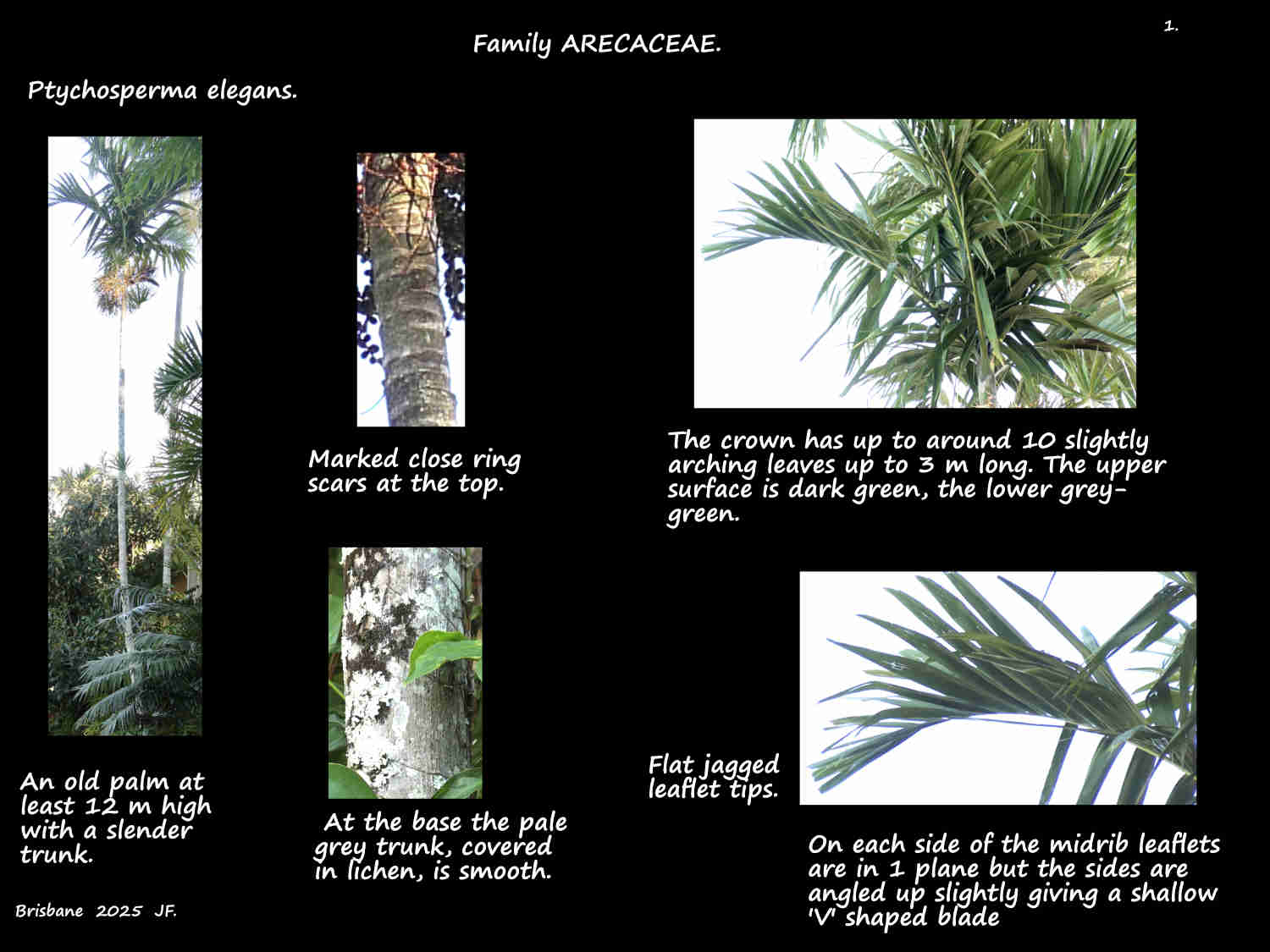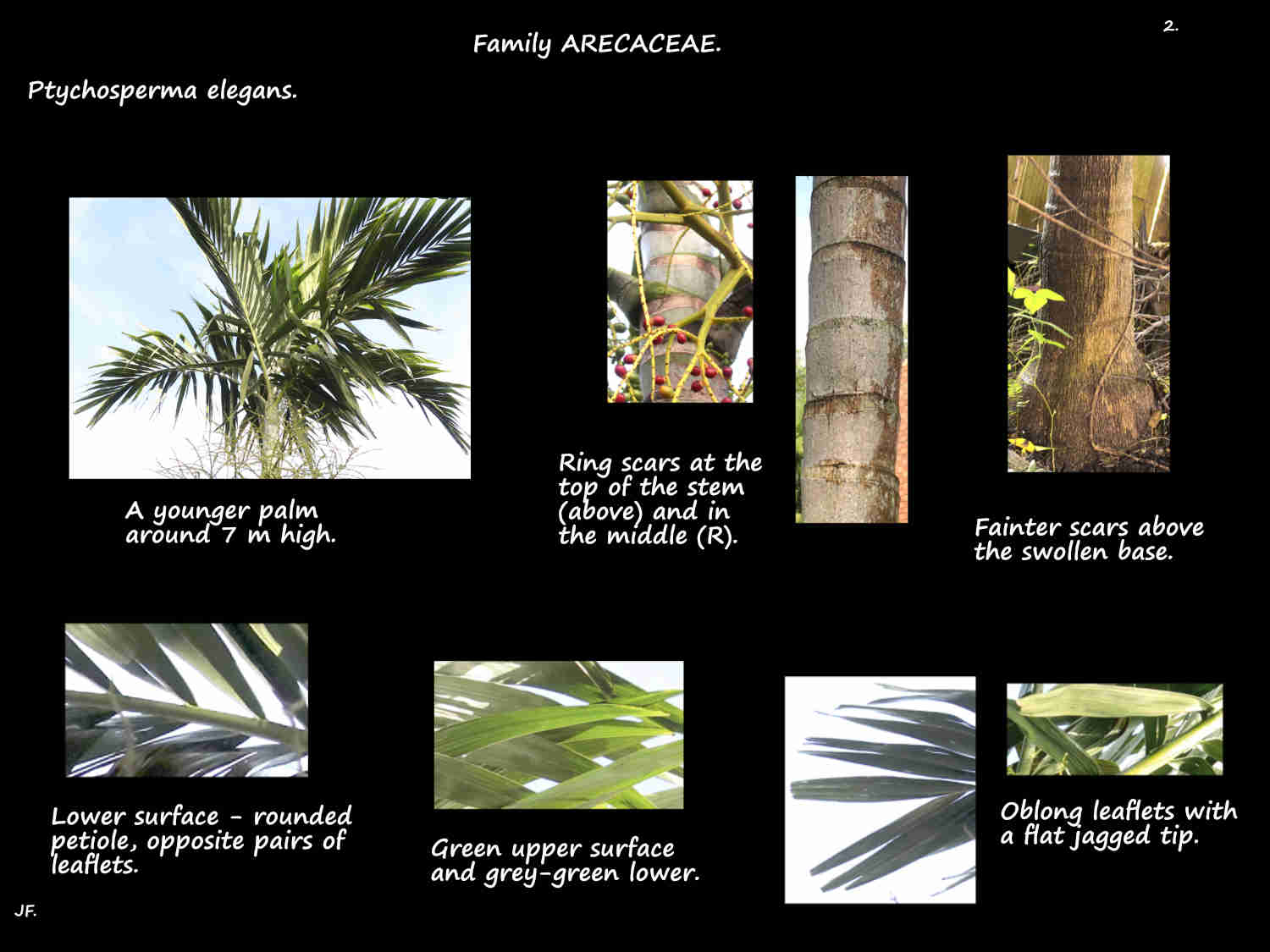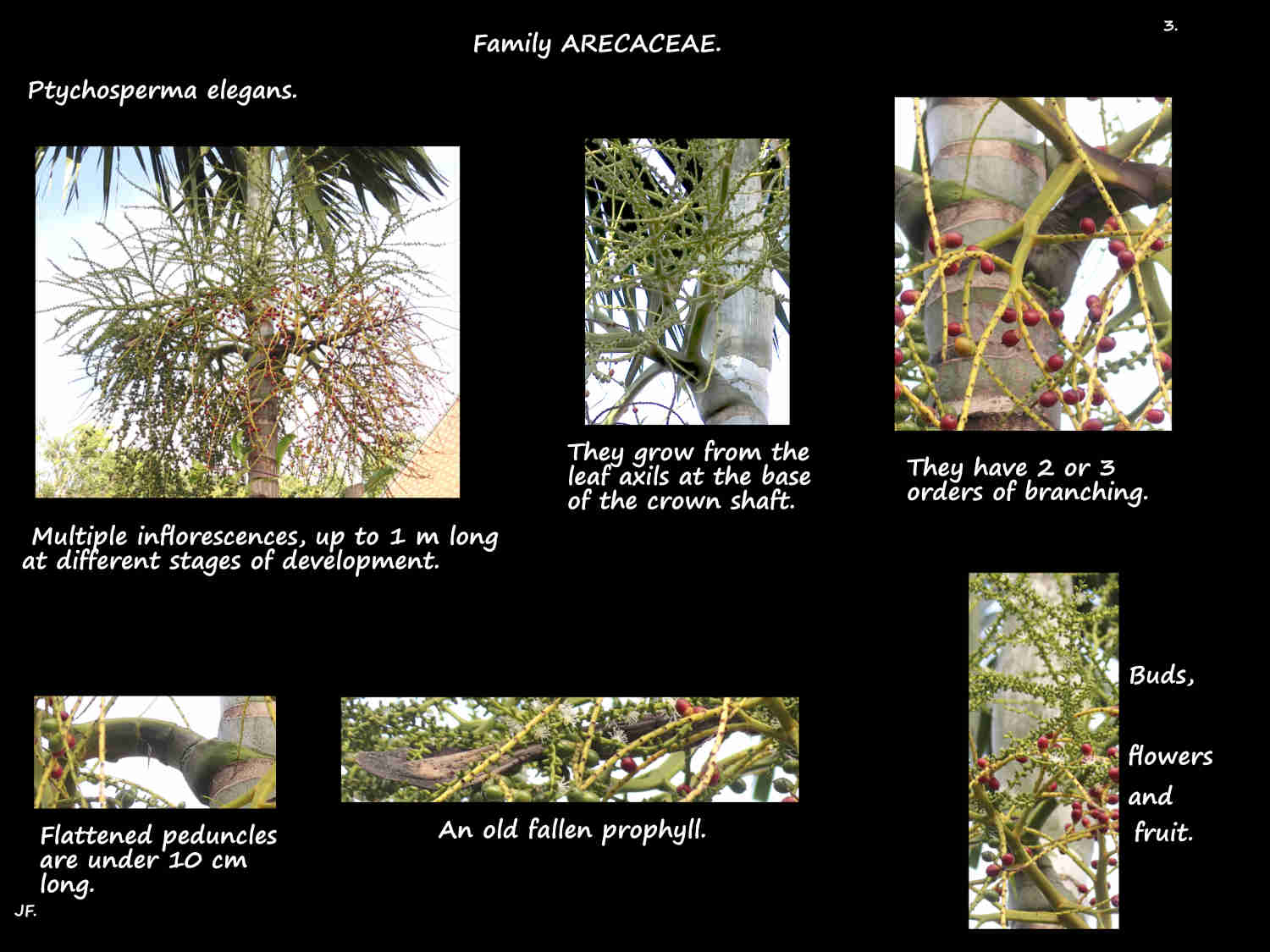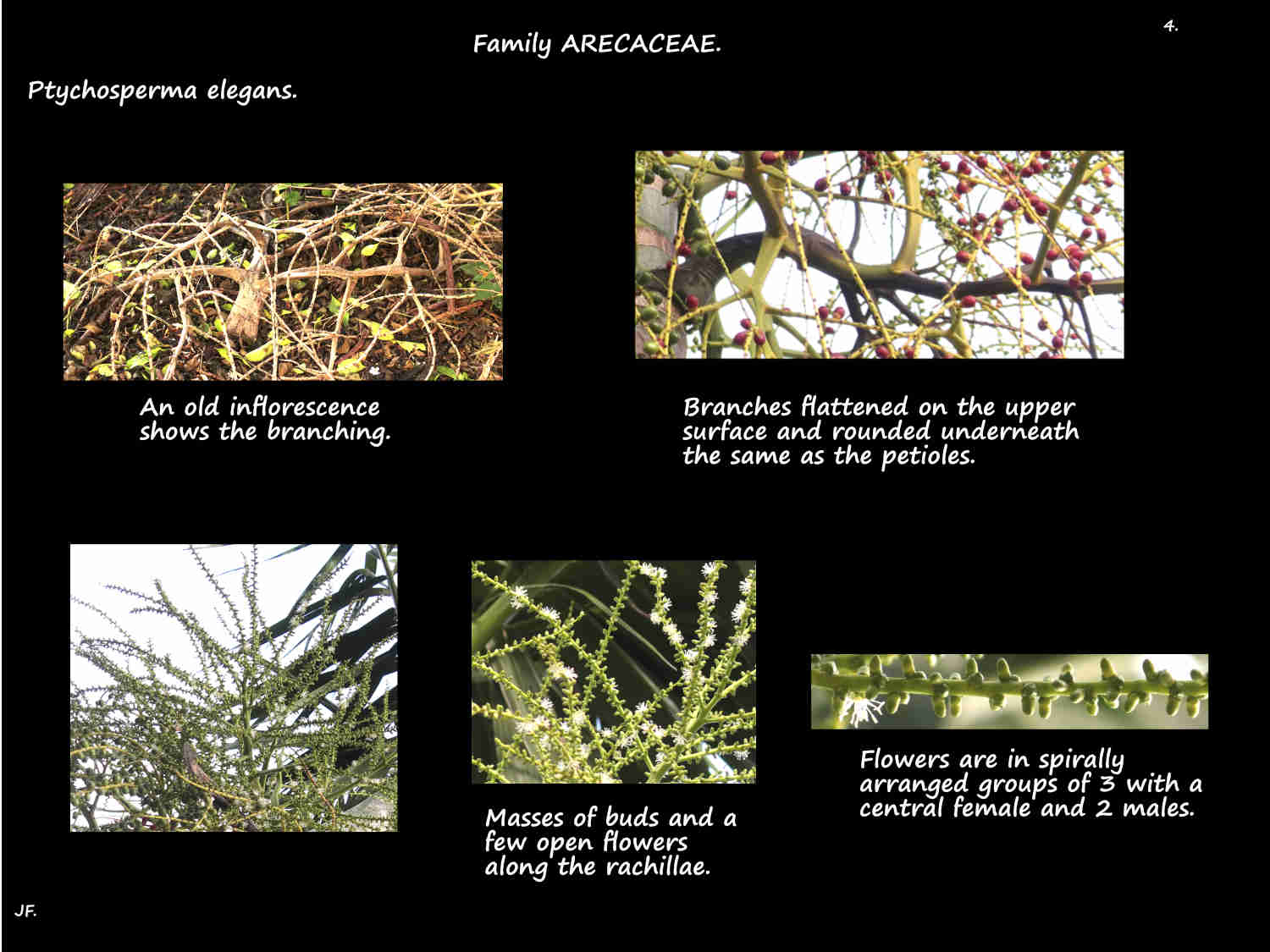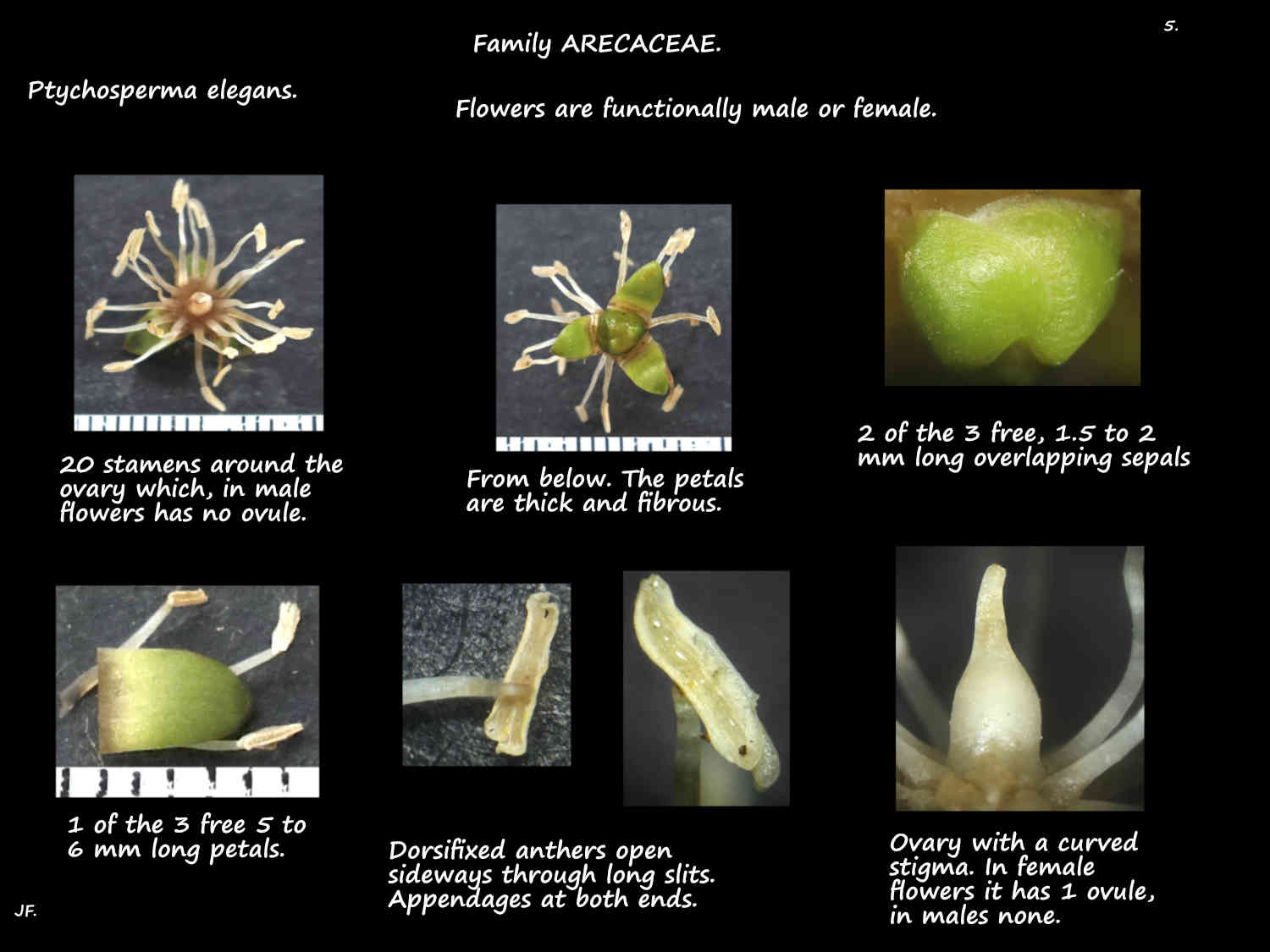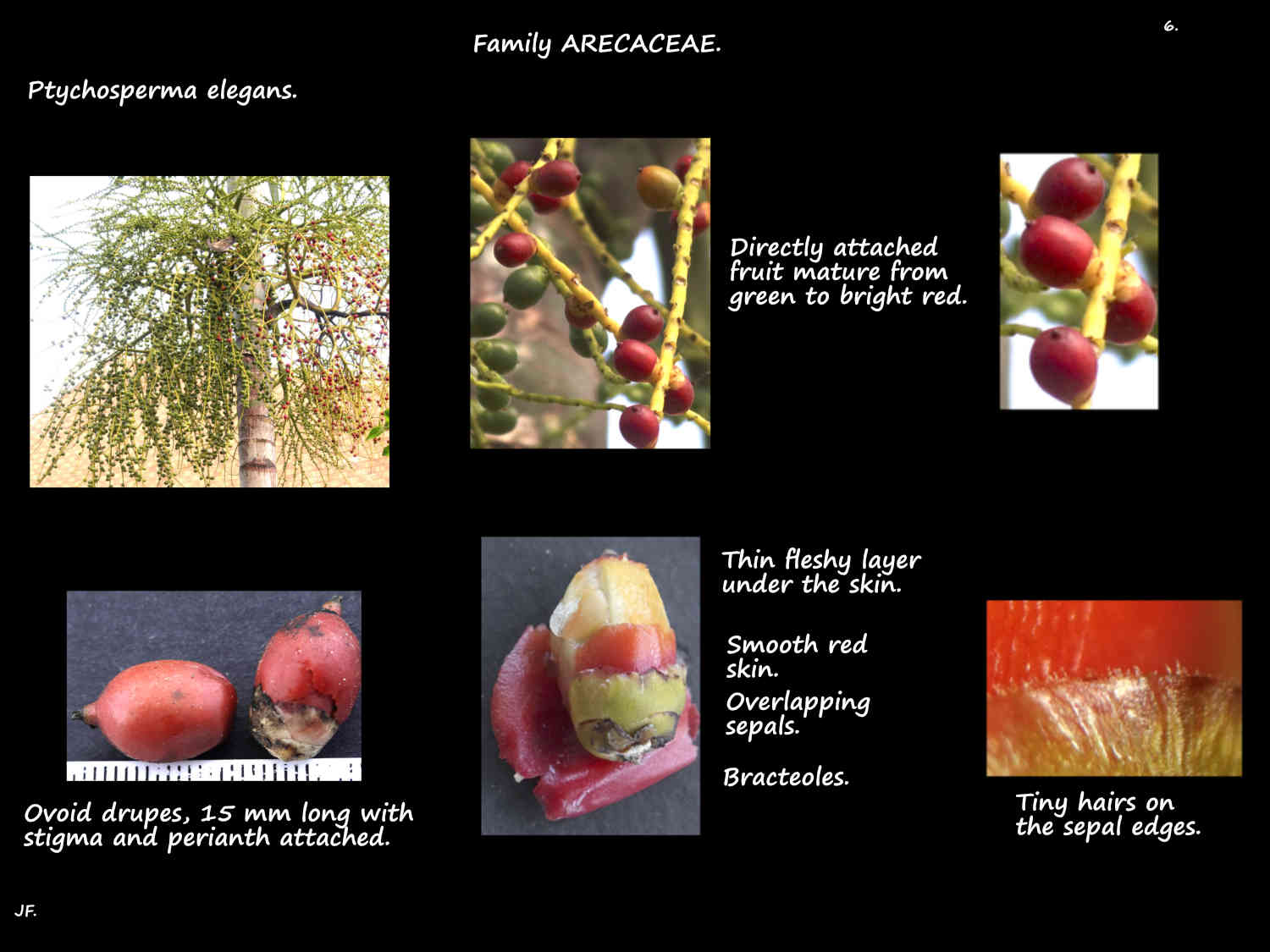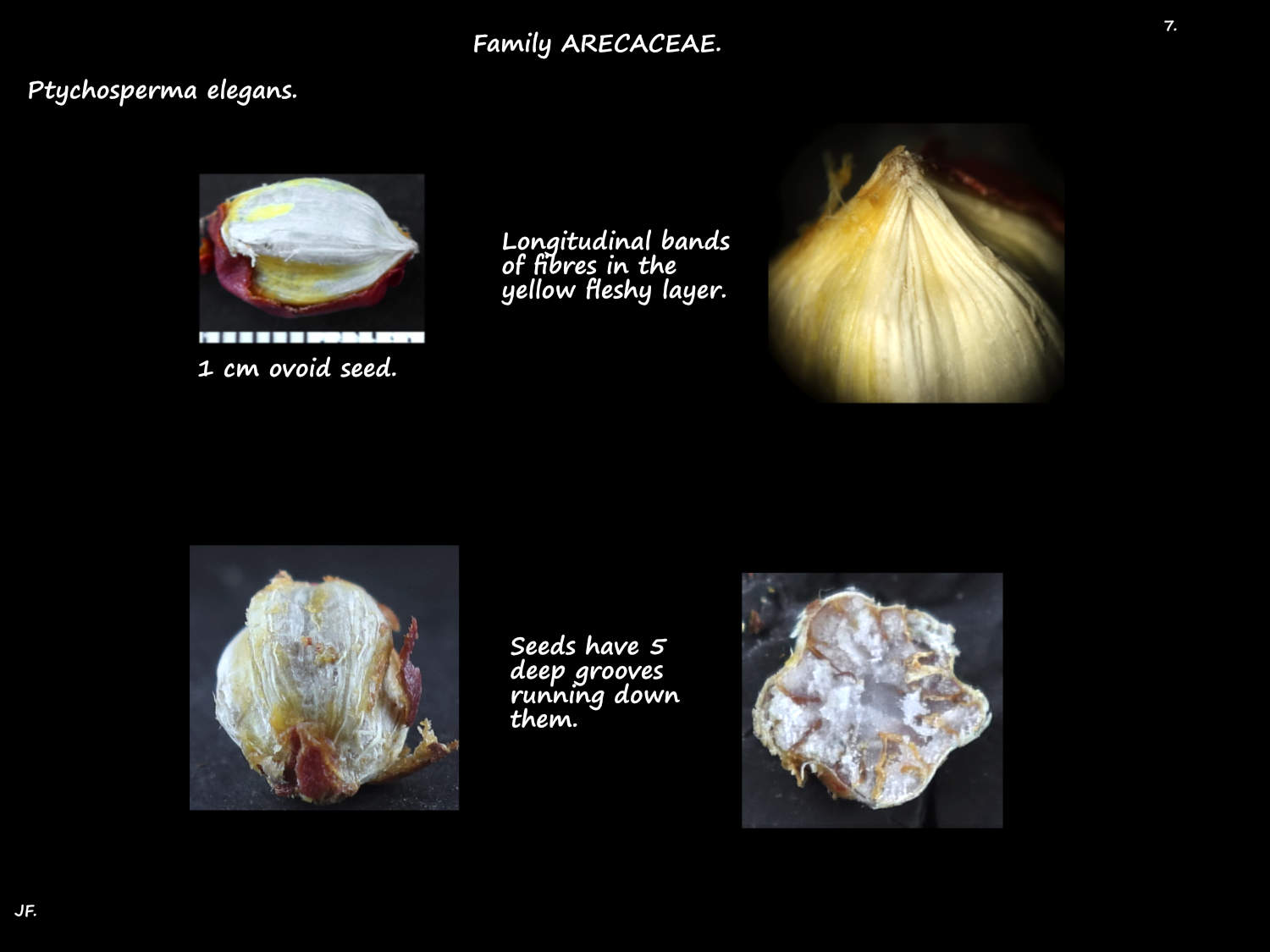Archontophoenix elegans is a synonym.
The Solitaire palm is native to eastern Queensland.
It is commonly seen in cultivation mainly in parks and older gardens.
The solitary palms, up to 10 or 12 (15) m high have a trunk around 10 cm wide.
The pale grey stems have a slightly swollen base.
The prominent dark raised ring scars fade on older palms.
The crown shaft, up to 60 cm high has a slightly swollen base.
The olive to mid-green shaft has a waxy white coating.
On top are around 9 or 10 pinnate leaves up to 2.5 or 3 m long.
The petiole, around 30 cm long continues as the slightly arching midrib or rachis.
The rachis has up to 60 opposite pairs of leaflets.
On each side leaflets are in a single plane but the sides are angled slightly up.
This makes the blade a shallow ‘V’ shape in cross section.
Leaflets are up to around 80 cm long in the middle of the blade.
The oblong leaflets have a flattish or oblique jagged tip.
Their edges are folded down (back, reduplicate).
They are slightly pleated along the veins and the mid and marginal veins are thick.
The upper surface is dark green and the lower a greyish-green.
There are rameta (large stalked scales) on the lower midribs.
Inflorescences, up to 1 m long are at the base of the crown shaft.
The yellow-green panicles are branched 2 or 3 times.
Along the ultimate branches (rachillae) flowers are in groups of 3.
The spirally arranged groups have a central female between the 2 males.
Flowers have 3 green sepals up to 2 mm long and the 3 green petals 5 to 6 mm long.
There around 10 to 20 stamens and a single ovary with a curved back stigma.
Male flowers have fertile anthers and an ovary with no ovule.
Female flowers have 6 small infertile staminodes and one ovule in the ovary.
The oval fruit, around 1.5 cm long and 1 cm wide have a small beak from the stigma.
Maturing to a bright red they have a single seed in the thin fleshy layer.
The 1 cm long oval seed has 5 longitudinal grooves.
J.F.

